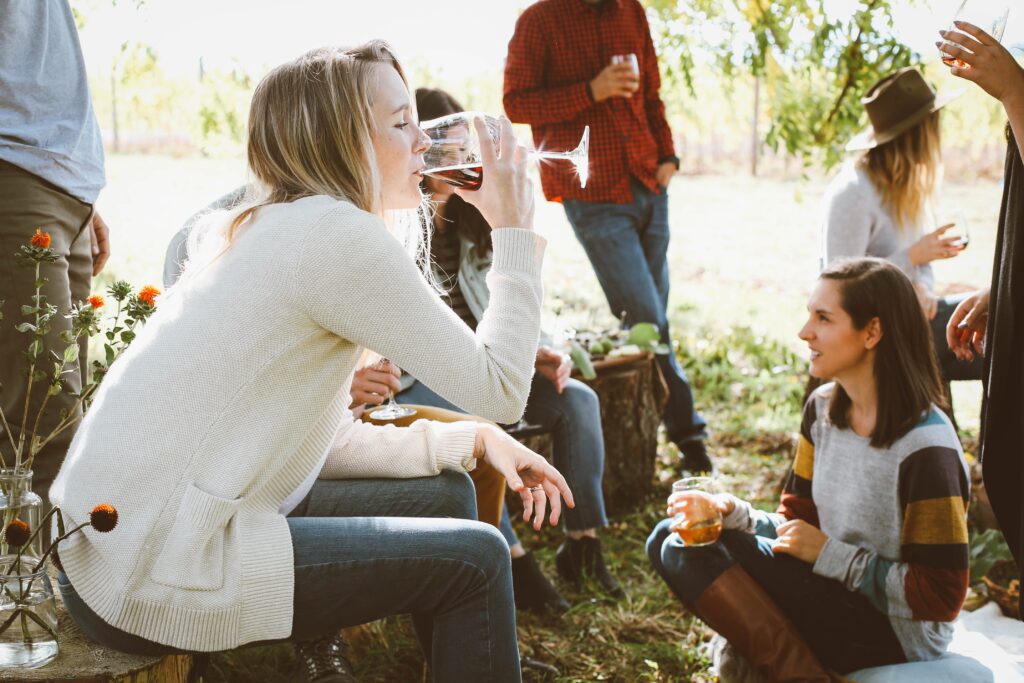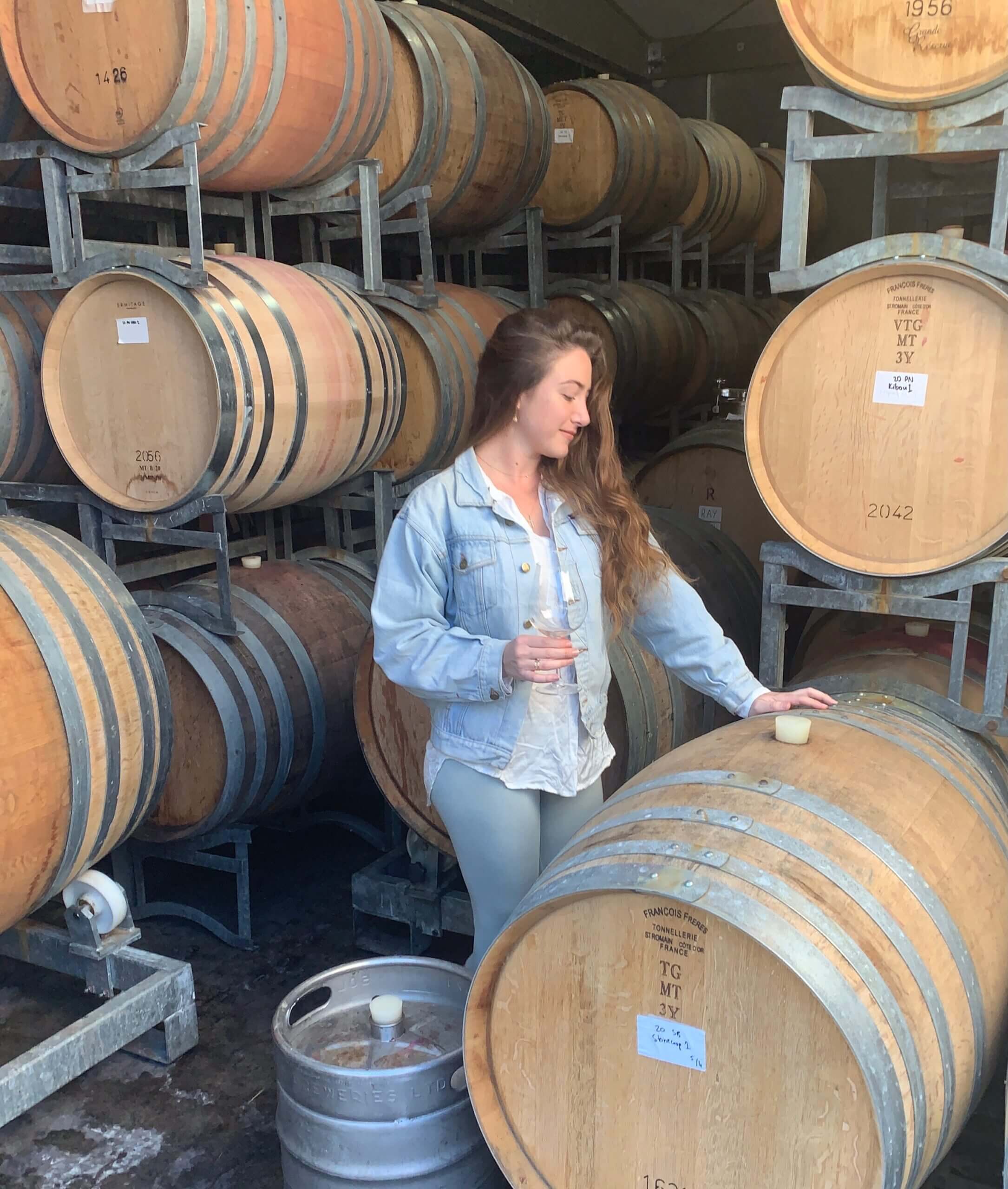How to Properly Drink Red Wine: A Guide for Beginners

A common misconception of wine (especially red), is that in order to enjoy it, you must be some sort of connoisseur. While there are plenty of fancy, highly priced red wines to go around, the truth is that anyone (21 or older) can fall in love with wine.
It’s silly to say that there is an ‘incorrect way’ to drink wine, but there certainly are methods to emphasize on certain aromas, textures, and flavors that you don’t want to miss. And we’re here to help beginners better understand how to drink red wine!
Begin with Your Senses
When drinking red wine, keep in mind that there is so much more going on in that liquid than appears to the eye! That said, you can use your eyes and 2 of your other senses to tease out the unique elements of the wine in your bottle or glass.
Sight
You can actually tell a lot about a red wine just by looking at it. From age to alcohol and sweetness levels, here is what to look for in your next glass:
- Color/Robe – This is the main color of the wine. The best way to get a clear visual of the color is to lean your glass over a white surface and look at the center of the wine. The color can signify age and the tannic presence in the wine. In most cases, the darker the color, the more ‘body’, or tannins the wine will carry. Brighter colors are found in younger wines. Keep an eye out for sediment as well, this is usually found in older wines.
- Tints – These are the colors that you see as the wine fades out towards the edge of the glass. This can help identify the age of the wine, as the tints will usually be a bright purple or ruby color in young reds, eventually fading into more brick, terra cotta, and rust colors as the wine ages.
- Brightness –This is a great way to approximately guess a wine’s age. Hold your wine glass so that the surface of the wine is at eye level. Moving the glass slightly left and right will cause the natural surrounding light to bounce off of the surface of your wine. This is the brightness. The more dull and dim the wine surface appears, the older the wine is.
- Meniscus – Keeping your wine at eye level, the meniscus is the ring that surrounds the outside of the surface of your wine. The thinner the meniscus is, the younger or more alcoholic the wine is. The color intensity can also signify age, with more intense color meaning younger wine.
- Viscosity – Notice the way the wine moves around your glass. The more viscous the wine is, the more sugar it contains. For example, dessert wines usually have a thick, syrupy viscosity.
- Legs or Tears – When swirling a wine around your glass, you will notice little streams running down the sides of the glass. These are referred to as, legs or tears. The darker the legs are, the more pigment the wine has. Thinner streams that run quicker tells us that the wine has more alcohol than streams that are thicker and run slower.

Smell
Smelling your wine is even more important than tasting it, as 80% of what we taste actually comes from our ability to smell. A stuffy nose is a sommelier’s worst nightmare!
- First Nose – The first nose refers to the smell of the wine before it is swirled. (So hold on swirling your wine to see the wine’s legs!) This pre-swirl sniff is meant to pick out the primary aromas. Primary aromas are those that naturally derive from the grape variety.
Common Primary Aromas found in red wines include: fruit, herbs, and floral notes
- Second Nose – Naturally, this is the smell of the wine after it is swirled. If the aromas have grown in complexity, this means that the wine will benefit from being decanted. Secondary aromas are picked up in the second nose, as well. Secondary aromas are those that are created during the winemaking/aging in the bottle.
Common Secondary Aromas found in red wines include: mushrooms, bread, cocoa, tobacco, nuts
Alcohol levels in wine provide another olfactory sensation worth mentioning. Just as you might have guessed, sniffing wines with higher alcohol levels often creates a slight burning sensation in the nostrils.
Taste
Tasting is not only for identifying flavors, but for feeling the texture of the wine’s tannins and acidity as well.
- Attack or Entry – This is when the wine first enters your mouth. What is the first thing that you notice about the wine? Is the entry soft, bold, or perhaps sweet?
- Evolution – As the wine makes itself down the tongue, how does the wine feel so far? Depending on the wine, it could start to feel tannic, silky, or even fresh.
- Mid-Palate – The most important step in the tasting process is the mid-palate. This is when the wine hits the middle/back of your tongue where most taste buds reside. Often times, sucking in a little air along with your sip is a good way to naturally aerate the wine, intensifying the flavors and aromas within the olfactory nerve. Take a moment to really get the mouth feel of the wine. Focus on the texture of the wine’s tannins. Do they feel gritty, round, or smooth?
- End-Palate – This is the moment that you swallow the wine. These are the final flavors and textures that the wine has to offer. The End-Palate can be described as drying, refreshing, or leaving hints of <<insert flavor here>>.
- Finish – This is usually when the sides of the back of your cheeks will water from the acidity (hopefully!) A mouth-watering finish is a great sign of a well-made wine that has aging potential. A short or long finish depends on how many seconds the wine’s flavors linger. A short finish is usually 4 or less seconds, while a long finish is 10 or more seconds.
Examining a Wine Label
Here are a few things to keep your eyes out for when choosing your next bottle to enjoy…
- Producer – The winemaker or winery that produced the wine
- Country or Region – Where the wine originates from
- Grape Variety – Wines can be of a single grape variety or a blend of different grapes (e.g. Bordeaux Blend)
- Vintage – Which year the grapes were picked
- Alcohol Level – Normally printed on the bottom or back of the wine label
- Sweetness – Commonly found on Champagne bottles (e.g. Brut and Extra Brut)
- Sulfates – Many times, wineries will print whether they put additional sulfates into the wine, or if they’re all naturally occurring
Ordering Wine at a Restaurant

Often times, wine lists can look pretty intimidating. Don’t worry, they’re easier to read than you think! Depending on the size of the wine list, most restaurants will organize their wines by color and/or regions. The correct way to list a wine is as follows:
Producer Name, Name of wine, Region or Appellation, Vintage
Example: DIDIER DAGUENEAU, ‘SILEX’, POUILLY-FUMÉ, 2016
Serving Red Wines
Most red wines will benefit with a bit of aeration, especially if they are four years or older. I always recommend using a aerator or decanting a red wine, with the exception of Pinot Noir.
Decanting will not only separate unwanted sediment, but will really help the wine open up and expose all of the gorgeous aromas that it has to offer. This can take some time, so be sure to pop open the bottle between 3 minutes to an hour before drinking. Patience is a virtue!
Red wine should be served in larger wine glasses, as they are often much more complex than white wines, and require more oxygen.
If you really want to soak in all of the specific characteristics of a wine, choose your glasses by grape variety. Pinot Noir glasses for Pinot Noir, Cabernet glasses for Cabernet, and so on.
Riedel sells wine glasses specific to the grape variety, if you’d like to up your wine game.
Pairing the Correct Food with Your Wine
It’s no secret that wine and food are soul mates, especially when we correctly play matchmaker. When the right wine is paired with the right food, they bring out the best qualities in each other, elevating your wine experience to a whole new level.

A good rule of thumb when pairing red wines with food is to keep the weight similar. For instance, a big bold red will be an excellent partner to a grilled steak, while a light and silky Pinot Noir will pair better with roasted chicken.
Similar to people, wines should be appreciated for what they are. There may be some red wines that you will adore, or maybe not so much…but there’s only one way to find out.
Cheers!

Katarina Jelks is a professionally trained sommelier from Hawaii. She received her Wine & Management Diploma from Le Cordon Bleu in Paris. Her experience working across the wine industry, in locations all around the world (France, Australia, New Zealand, the US & more), has resulted in a global perspective. She loves sharing her passion with others and helping them to chase their thirst for interesting wine and great food.
